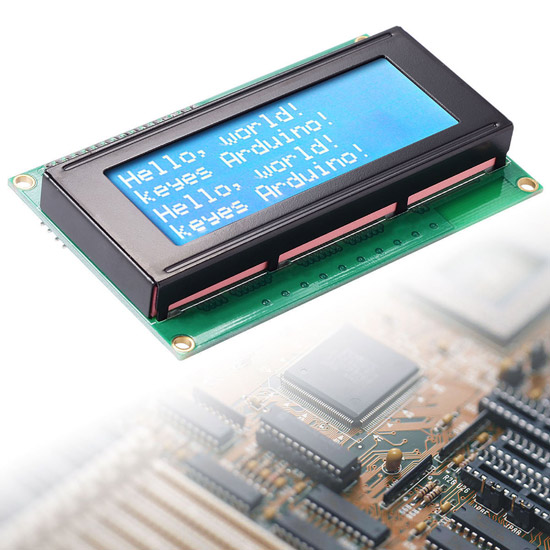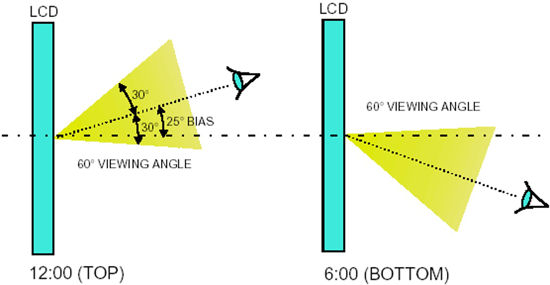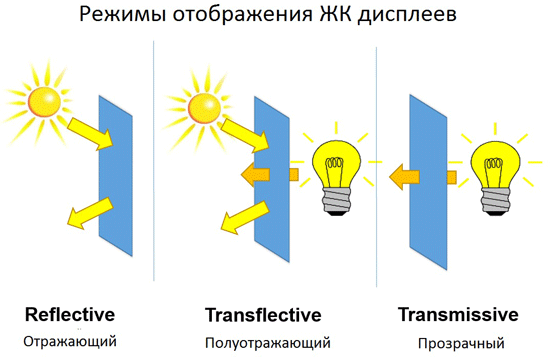Особенности выбора символьного ЖК-индикатора

При выборе символьного (знакосинтезирующего) индикатора следует основываться на двух соображениях:
- размер и формат модуля, необходимые для отображения информации;
- оптические характеристики для оптимального видения отображаемой информации и удобства пользования.
Следует также иметь в виду, что символьные модули отображают цифры, буквы и некоторую ограниченную графику. Интерфейс организуется, как правило, через двунаправленную параллельную шину ASCII данных. В принципе, модули символьных дисплеев являются простейшим и наиболее экономичным средством связи между любой микросистемой и человеком.
Символьные модули могут иметь от 8 до 80 символов в строке с возможностью выбора дисплеев с одной, двумя или четырьмя строками символов. При этом следует иметь в виду, что при необходимости отображения свыше 4 строк, или свыше 40 символов в строке, лучше использовать графические дисплеи. Особенно, если есть необходимость формировать символы, отличающиеся по размерам, или символы со специальными шрифтами.
Количество символов в строке, а также количество строк отображается в названии модуля. Так, например, модули, содержащие в названии комбинацию «1602» имеют 16 символов в строке и две строки. Модули, имеющие в названии комбинацию «2004» имеют 4 строки, в каждой из которых может отображаться 20 символов.
Одним из основных параметров символьных дисплеев является, т.н. «видимая» область. Иначе говоря – длина и ширина непосредственно матрицы, отображающей символы, а также габаритные размеры самого модуля. И этим не стоит пренебрегать, т.к. в рамках одного формата могут производиться несколько конструктивов, отличающихся как габаритами ЖКИ (как следствие, размерами символов), так и размерами платы и посадки.
Далее, выбор оптимальной версии ЖК индикатора даже внутри заданного формата, зависит от множества определяющих факторов. Цвет, тип материала жидкого кристалла , вид подсветки – все это влияет на характер работы с дисплеем. Также факторами, влияющими на определение типа дисплея, являются и окружающие условия, в которых будет эксплуатироваться конечное изделие – температура окружающей среды, условия освещенности, потребляемая мощность и т.п.
Тип материала жидкого кристалла определяет контраст, угол видения и диапазон рабочих температур. Существует три типа жидких кристаллов, используемых в ЖК дисплеях - TN, NTN и STN типы. Жидкие кристаллы TN типа – самый простой материал, используемый при изготовлении ЖК индикаторов. Кристаллы NTN и STN типов отличаются более высокой контрастностью с более широким углом видения. Основные соотношения, соответствующие различным типам жидких кристаллов отображены в таблице.
| Тип материала | Типовой контраст | Типовой угол видения |
|---|---|---|
| TN | 3:01 | 40-45° |
| NTN | 7:01 | 60° |
| STN | 10:01 | 75° |
Существует также модифицированная технология STN - FSTN. От технологии STN-матриц отличие состоит в том, что у FSTN-матриц с внешней стороны имеется специальная пленка, которая позволяет компенсировать цветовые сдвиги от синего на зеленый до черного на белый, а также улучшить угол обзора.
Кроме этого, необходимо иметь в виду, что угол обзора может быть направлен не перпендикулярно плоскости индикатора, а смещен в верхнюю, нижнюю, левую или правую область (угол смещения). Ориентацию угла смещения дисплеев часто формулируют с помощью опорных направлений циферблата стрелочных часов. Если направление лучшего обзора находится выше дисплея, говорят о смещении на 12:00 или об основном смещении. Если же направление лучшего обзора находится ниже дисплея, то обозначаться такое смещение будет как «6:00».

Следующими параметрами, необходимыми при выборе дисплея будут режимы отображения. Существуют т.н. «позитивный» и «негативный» режимы отображения. При позитивном режиме на дисплее отображаются «темные» символы на светлом фоне. При негативном режиме – наоборот, «светлые» символы на темном фоне.

Кроме того, ЖК индикаторы подразделяются еще на три типа - отражающие (reflective), прозрачные (transmissive) и полуотражающие (transflective).

Отражающие дисплеи оснащены отражателями с полным отражением. Подсветка в них не используется. Они имеют наименьшее потребление, имеют наивысший контраст в условиях высокой внешней освещенности и изготавливаются только с режимом «негативного» отображения. Прозрачные дисплеи имеют обычно «негативный» режим отображения. Для лучшей читаемости используется подсветка. Эти дисплеи используются, как правило, в условиях плохой освещенности. Их не рекомендуется использовать при прямом солнечном свете. Полуотражающие дисплеи объединяют в себе качества отражающих и прозрачных дисплеев. Эти дисплеи с «позитивным» отображением обеспечивают читаемость при всех условиях освещенности. При плохом освещении подсветка может быть включена, при хорошей - подсветка может быть выключена, что будет способствовать снижению потребления.
И, наконец, подсветка. EL (электролюминисцентная) подсветка является основной подсветкой LCD. Конструктив EL подсветки получается тонким, легким, сама подсветка имеет малое потребление, и размещается между сборкой стекла и печатной платой без какого либо изменения самого модуля дисплея. Большинство дисплеев с позитивным изображением оснащается зелено-голубыми лампами, в дисплеях с негативным изображением обычно применяются белые лампы. Необходимо обратить внимание на то, что яркость ламп и срок их службы обратно пропорциональны - с увеличением яркости укорачивается срок службы (снижение яркости до половины исходной). Светодиодная (LED) подсветка располагает существенно большим сроком жизни, по сравнению с электролюминесцентными лампами, однако ее применение приводит к увеличению потребления и росту размеров модуля. Не рекомендуется использовать их в приложениях с батарейным питанием, в которых необходимо иметь постоянно включенную подсветку.
